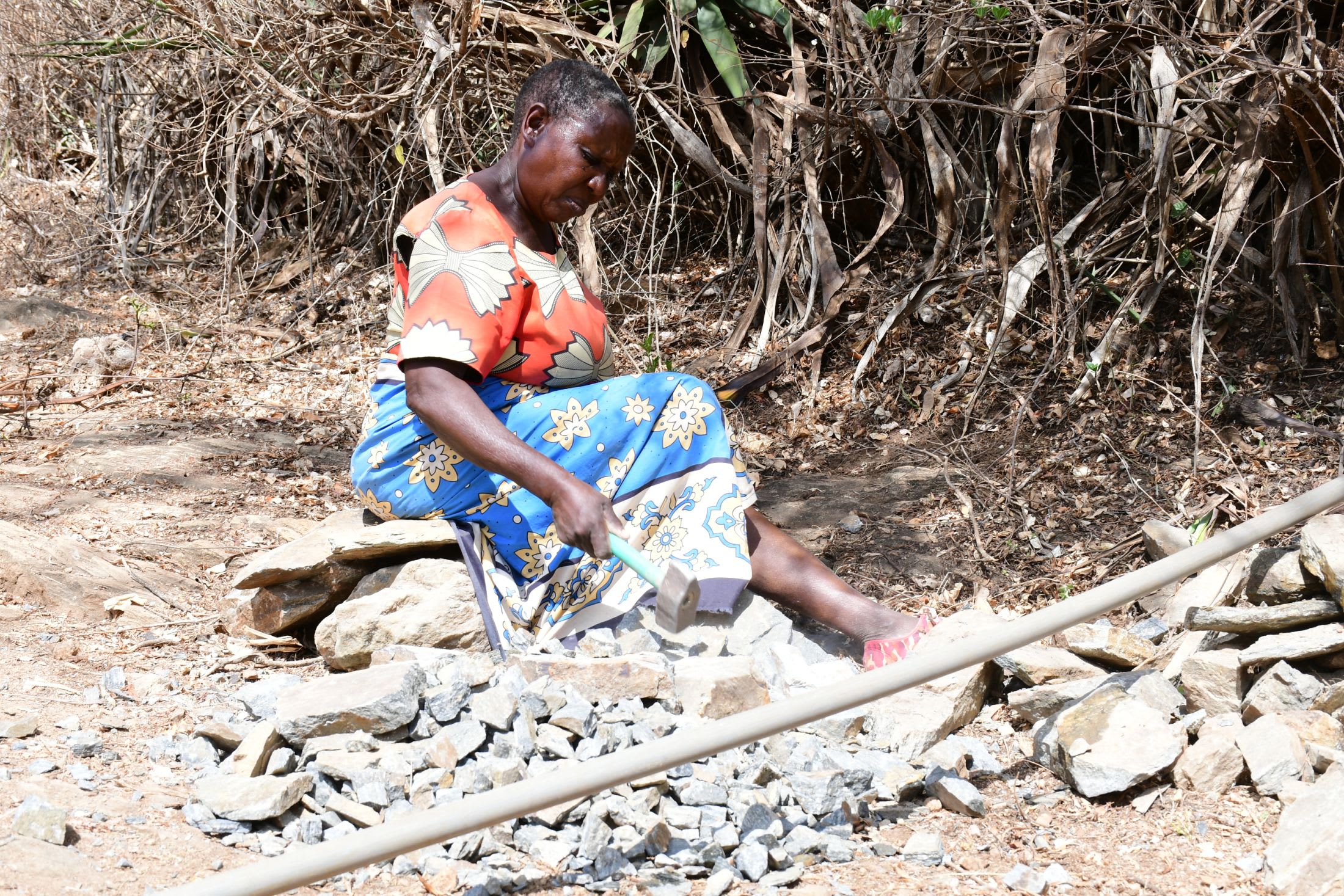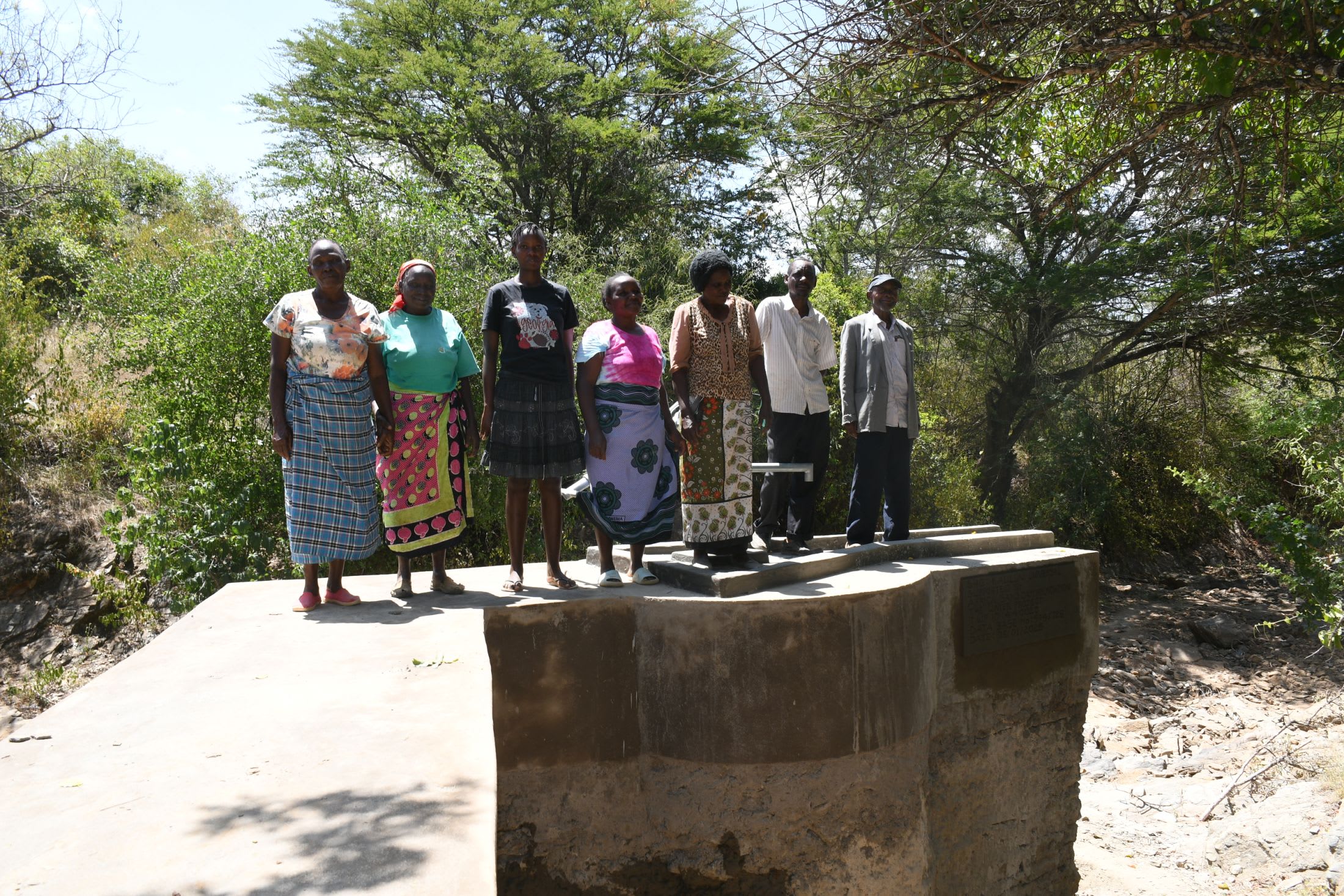Kisirani Community is located in a semi-arid region of Kenya that experiences erratic rainfall and severe droughts, leaving people without sufficient water to meet their daily needs. The 400 people who live here spend hours each day collecting water, meaning they have little time to do anything else.
Women wake up early in the morning to fetch water. Depending on where they live in the community, they walk up to three hours to reach either the faraway Mui River or a well and sand dam we implemented in another community. Then they must walk hours back home carrying water either by donkey, if they are fortunate enough to own one, or on their backs.

Most often, they choose the well since they know the water they are collecting is safer to drink, but it presents unique issues of its own when they arrive after their long, tiring journey. It is overcrowded and overutilized. They could spend hours waiting in line to collect just a few containers of water and not return home until the evening, or sadly, even wait hours in line for the water to run out, especially during the dry season.
"Since most community members carry water on their backs, it has led to back aches and leg pain, especially among the elderly women. They have to wake up that early. Walking to fetch water under the scorching sun is exacting and time-consuming, leaving the residents with little energy and time to engage in activities like land preparation, rearing cattle, or improving hygiene and sanitation. Irrigating crops is impossible because the available water is salty and insufficient, which has led to food insecurity and poor income levels. Students are also late to school, especially those who have to carry water to school every day," reported field officer Alex Koech.

"It is very exhausting to improve one's livelihood in this area because we are farmers who depend on water that's barely available, which consequently affects farming. Getting water to irrigate our crops and vegetables is impossible because the little available water is mostly used for cooking and drinking. Meals at home are also prepared late, and I end up on an empty stomach during most afternoons. My cattle and goats also provide poor yields due to exhaustion when walking to drink water from the borehole or shallow well," said 52-year-old farmer John Kitheka Munuve (seen above).
"I often skip school when there is no water at home because we are required to carry water every day to school during the drought periods. Like today, I have not gone to school because there was no water. I feel bad when I skip school because most of my friends are there, and I will end up failing my exams," said 10-year-old Mwendwa K., shown below, walking to collect water.

"Conducting personal hygiene at home is also hard because water is inadequate, and I have to go [to] school most times with my dirty uniform. I hope we will get a nearby water point that will enable me to always have clean water to drink and [be] present in school," Mwendwa said.
Installing a shallow well to provide water for people in this community will help so they do not have to waste their days walking to collect water. Hopefully, with more time available, there will be improvements in food and income security, and children will be able to attend school with hopes of a brighter future.
Helping to solve the water crisis in this community will take a multi-faceted system. It requires the collaboration of the shallow well alongside a sand dam. They will work together to create a sustainable water source that will serve this community for years to come.
Note: Our proposed water point can only serve 300 people per day. We hope to continue working with this community to identify other water solutions that will ensure all of the people in this community have access to safe and reliable drinking water.
The Proposed Solution, Determined Together...
At The Water Project, everyone has a part in conversations and solutions. We operate in transparency, believing it benefits everyone. We expect reliability from one another as well as our water solutions. Everyone involved makes this possible through hard work and dedication.
In a joint discovery process, community members determine their most advantageous water solution alongside our technical experts. Read more specifics about this solution on the What We're Building tab of this project page. Then, community members lend their support by collecting needed construction materials (sometimes for months ahead of time!), providing labor alongside our artisans, sheltering and feeding the builders, and supplying additional resources.
Water Access for Everyone
This water project is one piece in a large puzzle. In Kenya, Sierra Leone, and Uganda, we're working toward complete coverage of reliable, maintained water sources that guarantee public access now and in the future within a 30-minute round trip for each community, household, school, and health center. One day, we hope to report that this has been achieved!
Training on Health, Hygiene & More
With the community's input, we've identified topics where training will increase positive health outcomes at personal, household, and community levels. We'll coordinate with them to find the best training date. Some examples of what we train communities on are:
- Improved hygiene, health, and sanitation habits
- Safe water handling, storage & treatment
- Disease prevention and proper handwashing
- Income-generation
- Community leadership, governance, & election of a water committee
- Operation and maintenance of the water point

 Protected Dug Well
Protected Dug Well
 Rehabilitation Project
Rehabilitation Project






























